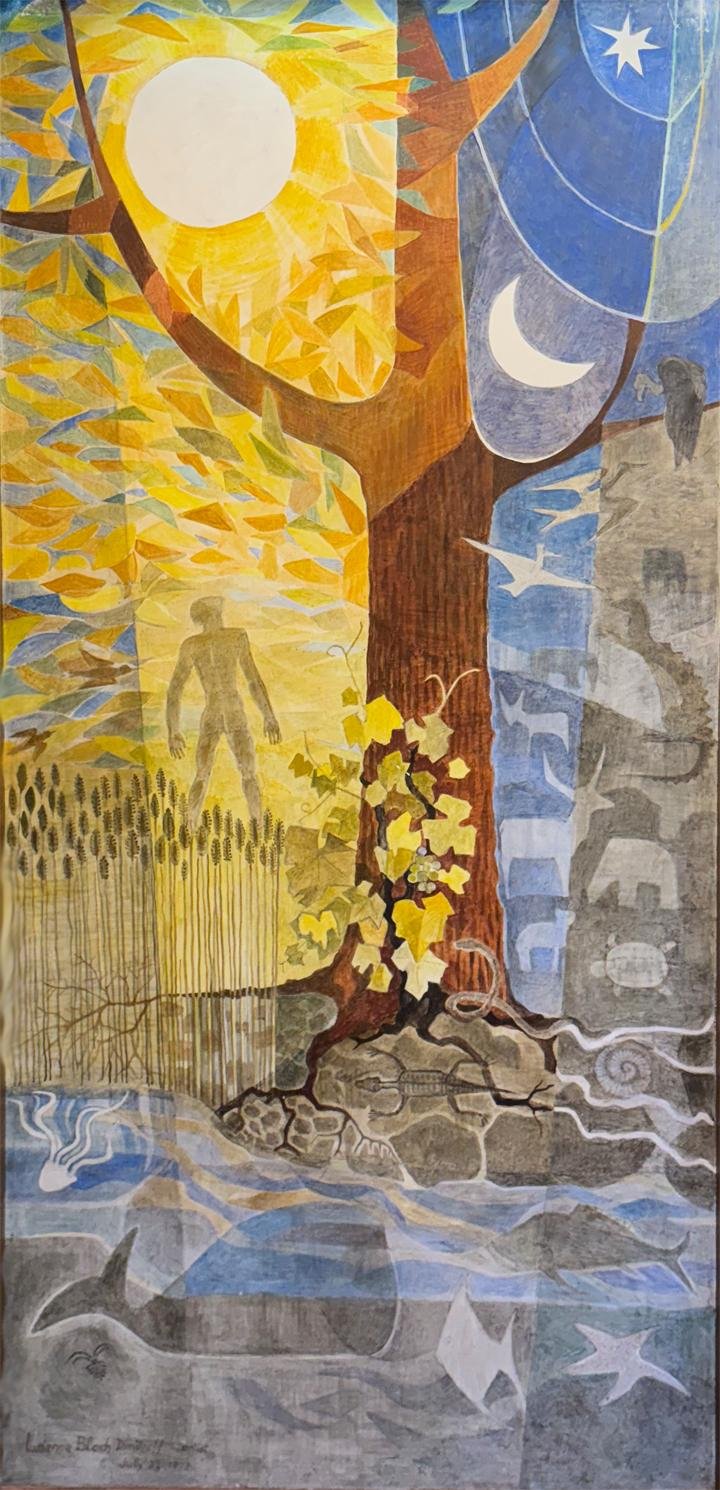A Short History
On September 26, 1869, a group of Presbyterians met in the Public School House in San Rafael and began the formation of the First Presbyterian Church of San Rafael. Many in the group were immigrants of Scottish ancestry. Funds were raised and in 1876 a new wooden sanctuary was built on the east side of E street between Third and Fourth Streets.
By 1892, the church had outgrown the original building and decided to build a new one at the corner of 5th and E streets. The original church was sold to the First Congregational Church of San Rafael in 1897.
On February 14, 1895, services were held in the new church which was constructed with stone from the Hotaling Quarry on Clark Street in San Rafael. In 1914, ten bronze bells were installed in the church’s bell tower. Each bell was engraved with a verse of holy scripture. In 1920, memorial windows designed by noted architect Julia Morgan were dedicated; they included fragments of glass from the cathedrals in Rheims and Verdun, France.
In 1950 offices and classrooms were added. In 1961, a large hall and kitchen were added.
In 1971, after much discussion regarding the structural safety of the stone sanctuary, the congregation decided to demolish the stone church and build a new sanctuary.
The bells, stained glass, and organ were carefully removed from the old church. On September 9, 1973, the new sanctuary was dedicated.
At the Christmas Eve service in 1974, the bells originally placed in the old church bell tower were played for the first time from the new 47-foot steel and redwood bell tower. On Palm Sunday 1975, the bell tower and Chapel Lounge were dedicated.
The Narthex Fresco Murals depict: the Creation, the Tree of Life and Old Testament Themes. They were created by Lucienne Block and her husband Stephen P. Dimitroff who both worked with Diego Rivera.
The Chancel cross especially created for the new church is 16 feet high and is constructed of redwood and metals. It depicts both the Christian and Presbyterian traditions.
In 2019 the First Presbyterian Church of San Rafael celebrated 150 years of serving the San Rafael community.














Historical Resources
Browse our collection of historical photos, brochures, and powerpoints.
Art & Architecture

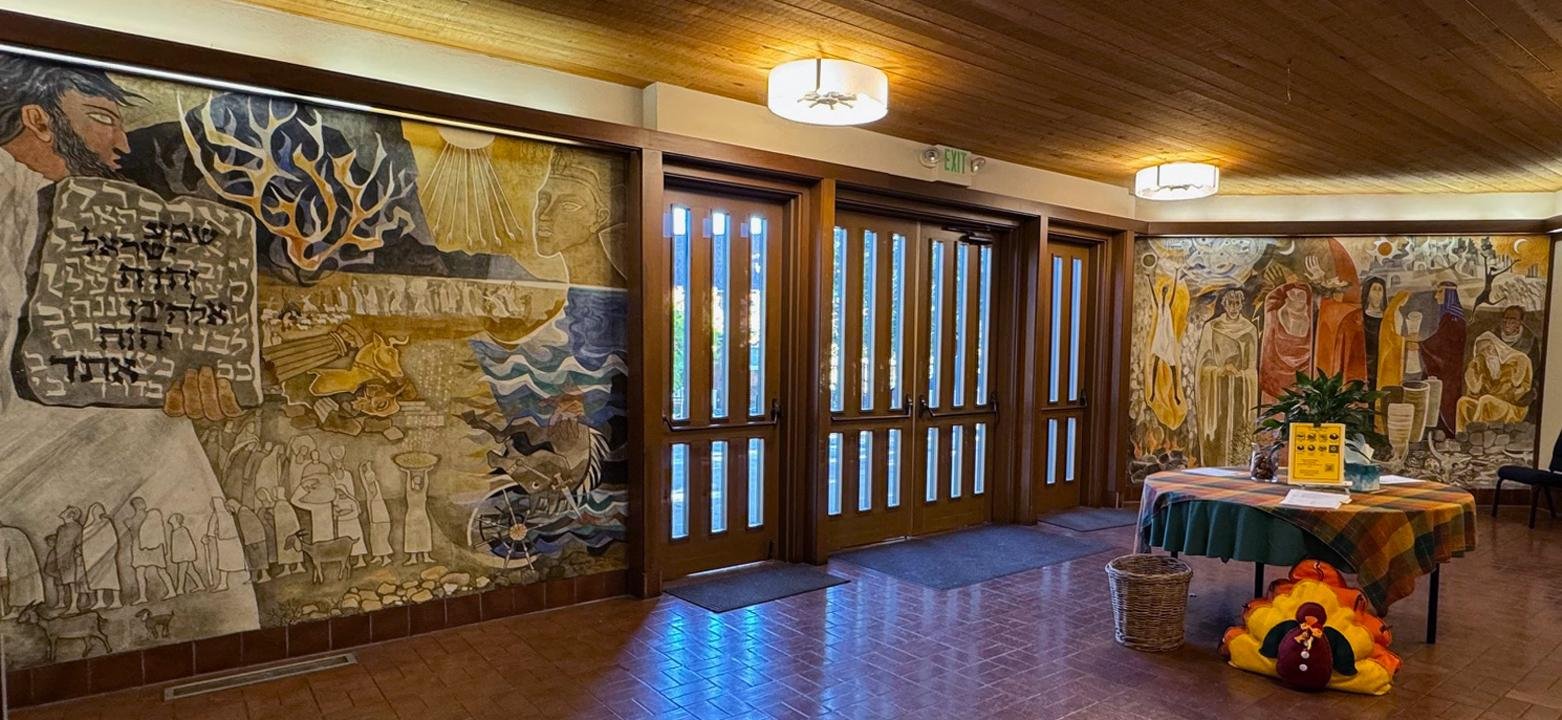



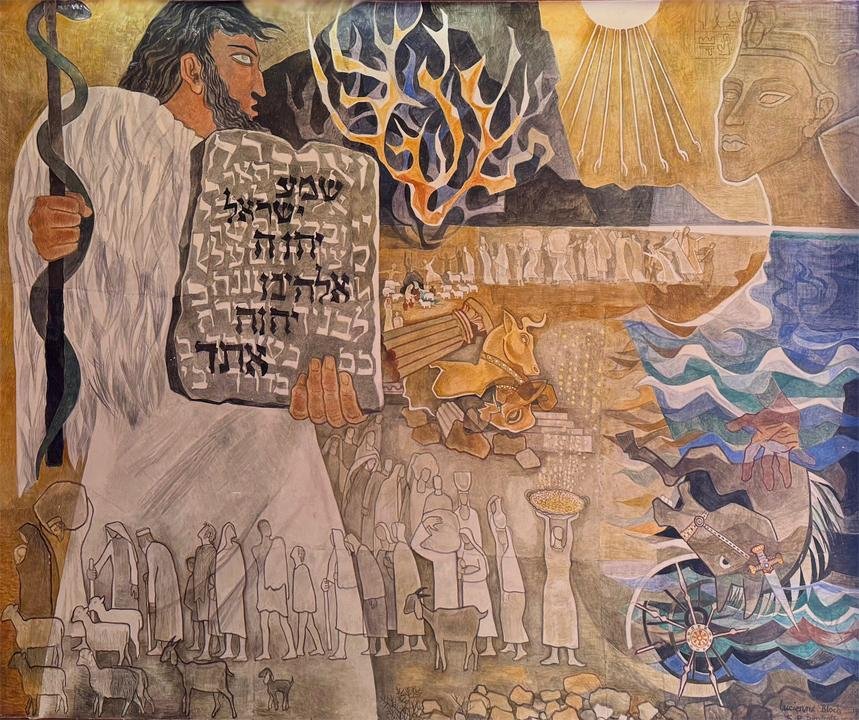
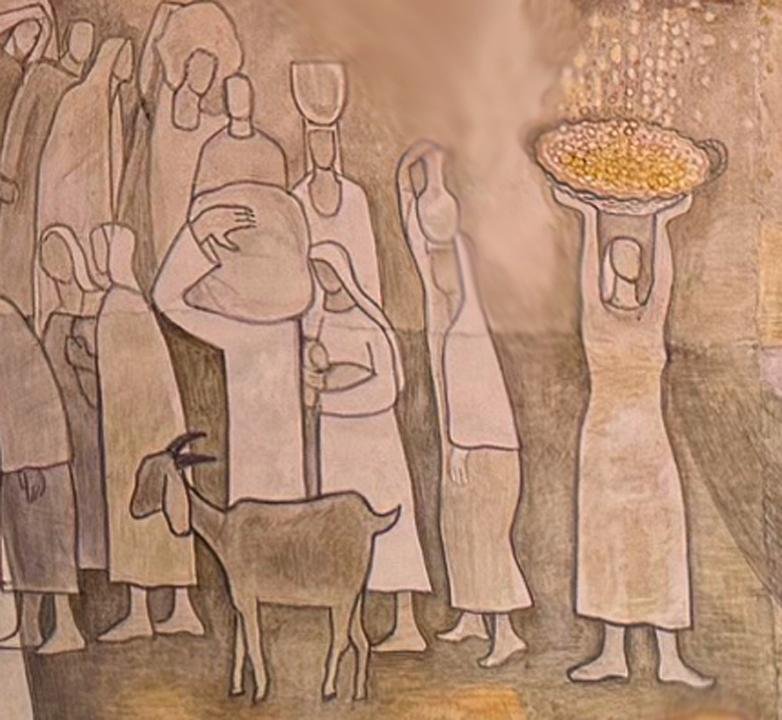

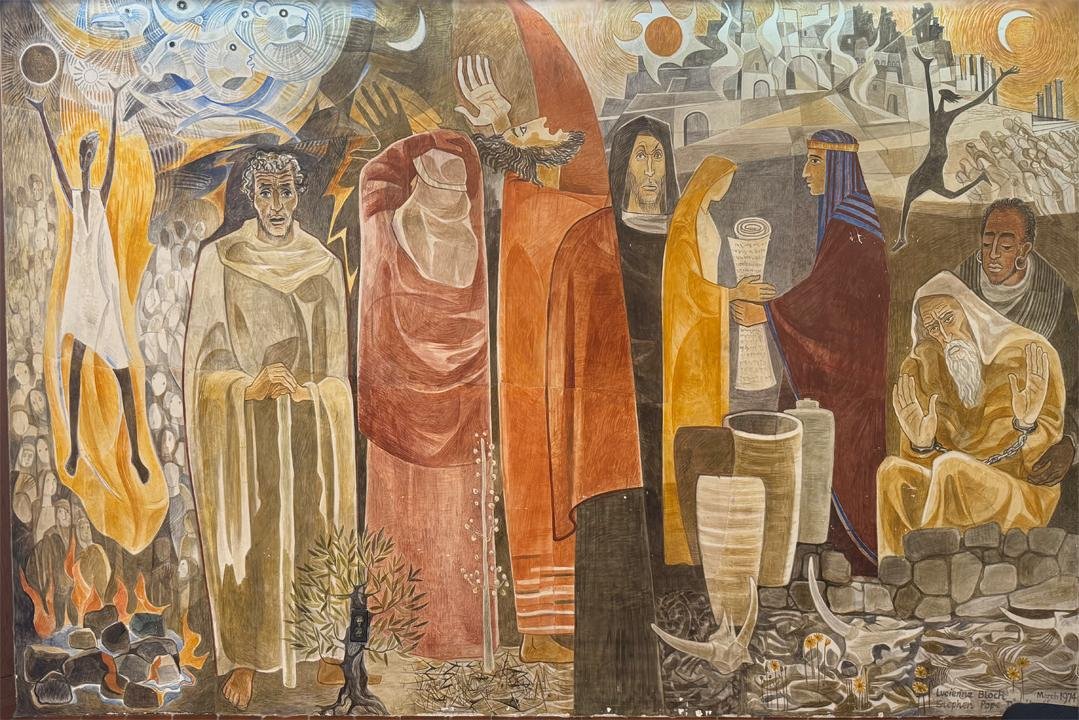
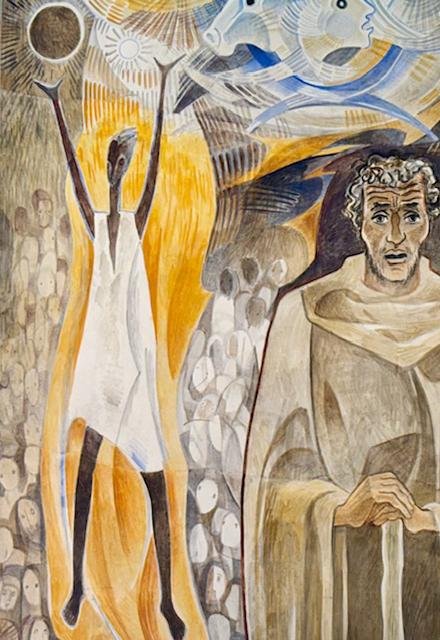
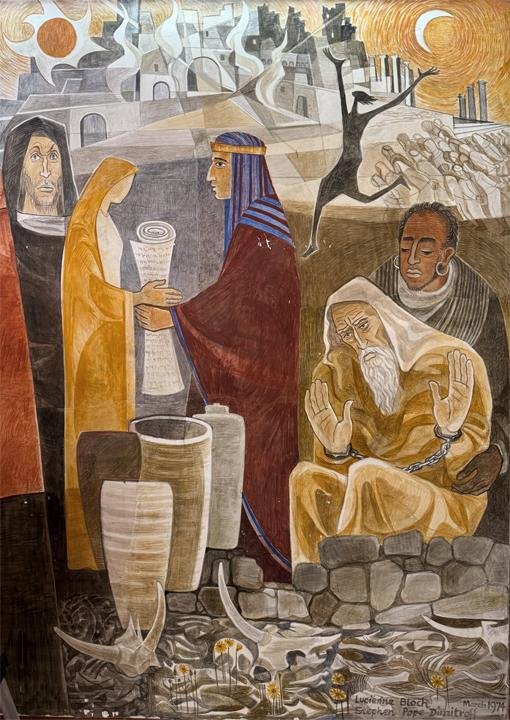
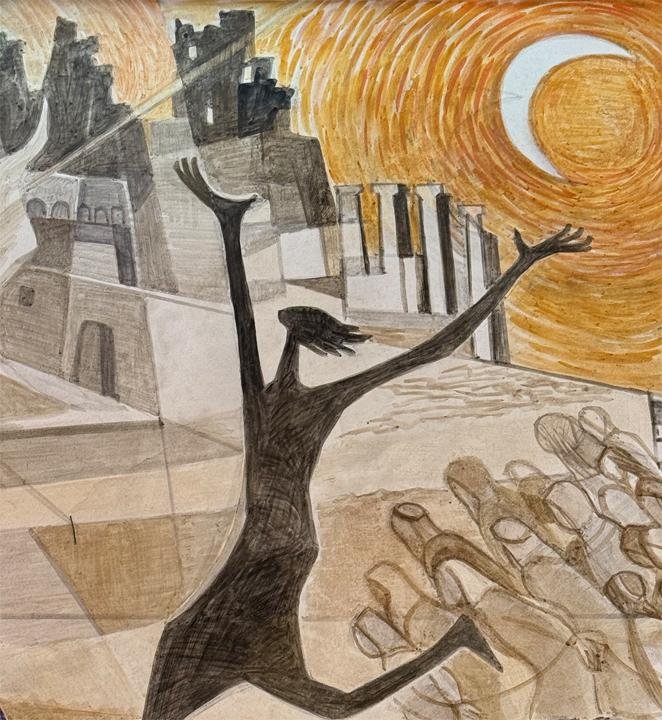
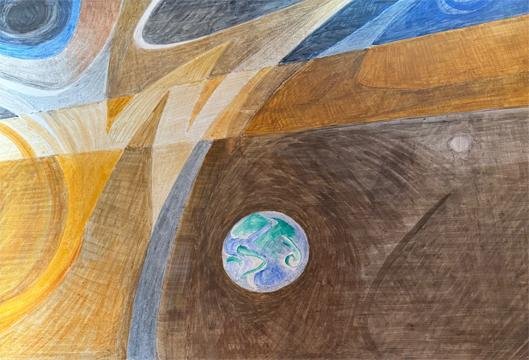
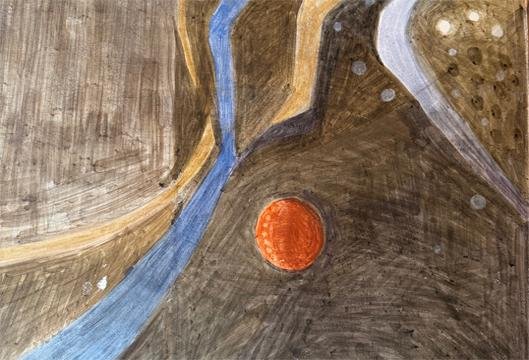
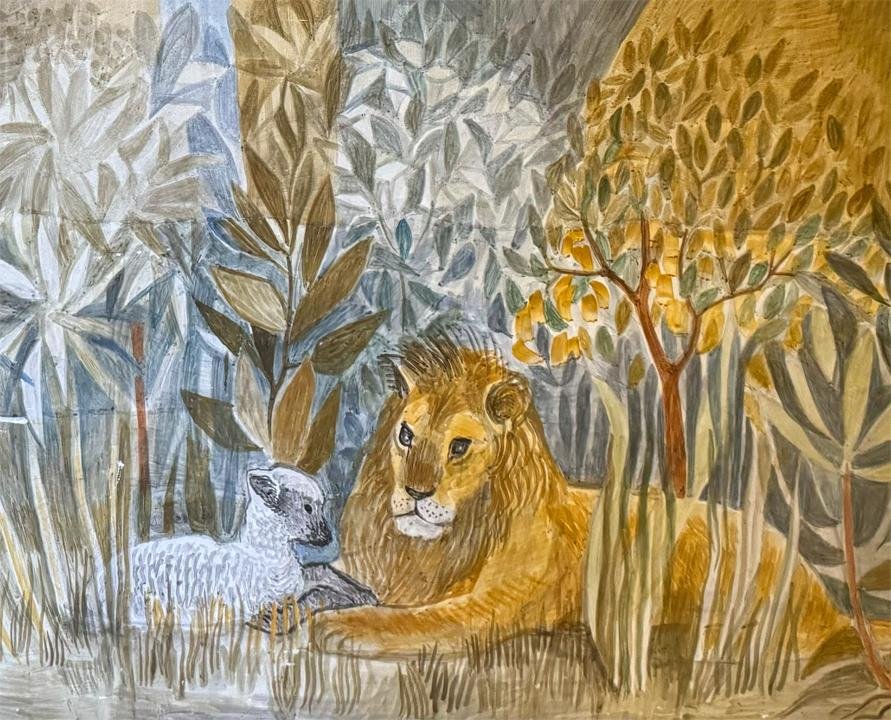

-
Our ten bronze bells were cast in 1914 by the McShain Bell Company of Baltimore, Maryland, once one of the largest manufacturers of bells in the United States.
The bells were originally the gift of Capt. And Mrs. Robert Dollar, word-renowned steamship owner and lumberman, as indicated in the following quote from the Memoirs of Robert Dollar: “In 1915, Mrs. Dollar and I presented to the First Presbyterian Church of San Rafael a set of chimes which were installed in the belfry and added greatly to the attraction of the town. The gift was appreciated by the citizens, as old familiar tunes are played every Sunday. There were ten bells in the set, and on the largest is the inscription: “Presented to the First Presbyterian Church of San Rafael, California, by Mr. and Mrs. Robert Dollar.”
Removed from the stone belfry and stored prior to construction of the present sanctuary, the ten bells were hung anew on a 48-foot steel and redwood bell tower as part of Phase II of the Second Century Building Program. Individual bells are struck by mechanical clappers actuated electronically from a keyboard placed alongside the church organ console.
-
Nine of the ten bells were completely installed as individual memorials. They are listed below from the largest to the smallest. Each bell is engraved with a verse of Holy Scripture. In 2024, a plaque was added to the bell tower honoring Rev. Charles Griffen, who was the pastor at the time the tower was erected.
Bell 1 [Musical Note E] Inscription: “I was glad when they said unto me, let us go into the house of the Lord.”
In honor of the San Rafael Chinese Mission by Mr. and Mrs. Soo Chong and Mr. Ton Jue, Trustees.
In memory of Mrs. John Mason (Jeanie Campbell Blackwood). Born in Scotland, she moved to San Francisco in 1886 with her family and became associated with the Florence Crittenden Home. The plight of young slave girls in Chinatown became her most absorbing interest and her badge of confidence was a police whistle which she never needed to use on her precarious missions. She died in Los Gatos in 1929. Given by her granddaughter, Ruth Mason.
Bell 2 [Musical Note F] Inscription: “Glory to God in the highest and on earth peace, goodwill toward men.”
Installation of this bell was a “community” effort including many gifts and memorials.
Bell 3 [Musical Note G] Inscription: “God be merciful to us and bless us and cause his face to shine upon us.”
In loving memory of Dr. Earle M. Young from his family. Dr. Young was born in Kansas, graduated from the University of California Medical School, practiced dentistry for 30 years in Marin, and was a Ruling Elder in this church.
Bell 4 [Musical Note A] Inscription: “Let the people praise Thee, O God; Yea, let all the people praise Thee.”
In loving memory of Florence H. Archibald from her husband Samuel D. Archibald.
Bell 5 [Musical Note B] Inscription: “God shall bless us and all the ends of the earth shall fear him.”
In loving memory of Ferard Leicester from his wife, Katherine: “I thank God for every remembrance of you.”
Bell 6 [Musical Note C] Inscription: “In Thee, O Lord, do I put my trust. Let me never be put to confusion.”
Funds to install this bell were taken from an endowment established in honor of Capt. Robert Dollar, which provided for a chimes-ringer who operated wooden levers to sound the bells. The original lever mechanism has been preserved as a church artifact and is displayed in the Chapel Lounge. At his death in 1932 in the Dollar Mansion, Capt. Dollar’s worn leather bible was found on the table beside him opened to this verse from Second Timothy: “I have fought the good fight. I have kept the faith. I have finished the course.”
Bell 7 [Musical Note D] Inscription: “Praise God from whom all blessings flow.”
I honor of Walter Zurcher so that the music he loved be sent from his church into the community he loved. The bell is given by his many friends and his family. Walt was active in San Rafael civic affairs, a local merchant for 25 years, a Ruling Elder and Trustee of our church, Presbytery, and Synod.
Bell 8 [Musical Note D] Inscription: “I am the light of the world.”
In memory of William W. Eastman, our beloved son Billy, who left us all too soon but lives in our memory and in our hearts. He always loved the bells. From Dr. William R. and Bernice Eastman.
Bell 9 [Musical Note E] Inscription: “My faith looks up to Thee, Thou Lamb of Calvary.”
In loving memory of Raymond Haven Thayer from his wife, Laura M. Thayer. A choir member and Trustee of First Presbyterian Church and President of the Trustees until his death in 1955, Raymond H. Thayer always gave his best to his church because he loved it.
Bell 10 [Musical Note F] Inscription: “Be thou faithful unto death and I will give thee a crown of life.”
In memory of George A. Peer. Because of my husband’s love for the First Presbyterian Church and his dedication to its service throughout his long lifetime, this memorial is given in his memory with love from his wife, Marie, and sons, George Clement and Edward Calvin Peer.
-
Lucienne Bloch – The Artist and Her Works
Lucienne studied art at the Cleveland School of Art (skipping high school) for a full year as a college freshman when she was 15. At the age of 16, she went to Europe and studied sculpture with Antoine Bourdelle, painting with Andre Lhote, anatomy and drawing at the Ecole Nationale des Beaux Arts in Paris. Four years later, she designed glass figures and animals for the Royal Leerdam Glassworks in Holland.When Frank Lloyd Wright saw her glass work, he invited her to teach sculpture at his architectural school in Taliesin East. Her interests, however, were shifted to mural painting when she became an apprentice of Diego Rivera, the Mexican painter. Miss Bloch met her husband, Stephen Pope Dimitroff, while they were both assistants to Rivera. They worked on mural projects ever since with Stephen doing the technical fresco work and Lucienne doing the painting.
The Dimitroffs taught art at the Flint Art Institute in Michigan during World War II. They moved to California with their three small children in 1948 and settled in Mill Valley. They then moved to Gualala, in Northern California, where they had a ranch and studios.
Lucienne won many awards in her wide career as an artist such as: Ivory Soap Sculpture contest (2nd prize in the Professional category), 1936; Gold Medal for Lithography at the Paris Expositions des Arts Decoratives, 1937; Detroit Art Institute portrait in egg tempera, 1947; illustrations for a children’s book, “Sandpipers”, which won second of the “10 Best Illustrated Children’s Books of 1961” by the New York Times; Purchase Award from the National Academy of Arts & Letters in New York City; as well as awards in San Francisco, Marin, and Mendocino Counties in drawing, acrylic, and various other media.
She was a member of the San Francisco Art Association, Artists Equity Association, Marin Society of Artists, Mendocino Art Center, and Educational Chairman of Gualala Arts.
-
The major structure in the second phase (1974-1977) of the Second Century Building Program, the chapel was designed to complement the new sanctuary in material, form, and function. Its foundations once supported (in historical order) a social hall and classroom and then a choir rehearsal room, classroom, and pipe organ chambers.
Containing 1,450 sq. ft. of usable area, the new chapel facilitates a wide range of church activities:
Weddings and receptions
Memorial services
Worship services for smaller groups
Coffee fellowship following Sunday worship
Meetings of church officers
Special classes for adults and youth
Seasonal and art exhibits
Church library (located in the adjoining space)
Stained glass panels which enhance the purpose of the chapel include (1) “Christ Transfigured” formerly the center section of the older sanctuary’s East Windows, constructed by the Charles J. Connick Associates of Boston, Massachusetts, and dedicated in memory of R. Stanley Dollar in 1962; and (2) the “Browning Window” formerly located at the rear of the older sanctuary and containing a memorial line to Adaline Dutton Kent (1834-1914) and the quotation from Robert Browning: “Rejoice, we are allied to that which doth provide and not partake, effect, and not receive. A spark disturbs our clod: nearer we hold to God who gives than of his tribes that take. I must believe.”



